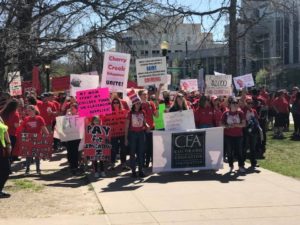K-12 public schools in NYC cost nearly $40,000 per student. That’s more expensive than the average private university
Public school funding in New York City is going through the roof – of the Empire State Building.
Despite decreasing enrollment, NYC public schools are primed to spend nearly $38,000 per student in…

Public school funding in New York City is going through the roof – of the Empire State Building.
Despite decreasing enrollment, NYC public schools are primed to spend nearly $38,000 per student in the upcoming year – more than the average annual tuition for a private university.
Citizens Budget Commission, a local watchdog, says nearly $37 billion – one-third of the city’s entire budget – is devoted to education. It projects per-student funding will reach $41,000 by 2026.
Comparatively, most states spend $10,000 to $15,000 for every K-12 student, making NYC’s budget a staggering display of waste and bureaucratic bloat, even when varying costs of living are considered.
Some might argue robust student achievement would make such a hefty tab worthwhile, but the city’s scores are dismal.
Public school students of all ages average about 50% proficiency in math and reading. High school reading proficiency – 75% – is perhaps the brightest spot in performance.
The New York Post blames teachers’ unions for protecting bad teachers, opposing reforms, and increasing instructional costs, all while the same unions scratch the backs of politicians devoted to sending more money to public schools, increasing teachers’ union coffers.
In the Empire State, instructional salaries and benefits alone cost nearly $16,000 per pupil – 120% more than the national average, reports E.J. Mahon, senior fellow of the Empire Center.
While public education nationwide seems trapped in a never-ending downward spiral, education experts are eager to test new solutions.
“The bottom line is that New York needs to get more bang for its education bucks,” wrote Aaron Garth Smith, education reform director at Reason Foundation. “State lawmakers should follow the lead of the 18 states that either enacted new choice programs or expanded existing ones in 2021.”
School choice comes in many forms, including public charter schools, open enrollment, and allowing parents to direct how their child’s education dollars are spent.
“School choice would be a win-win for both taxpayers and kids,” Smith concluded.



